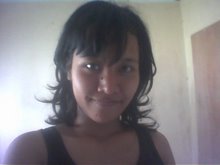Certain mathematical problems thwart even the most powerful computers. Recently, scientists have been exploring DNA's potential to solve these stumpers. By coding data as sequences of DNA and biochemically manipulating them, scientists can orchestrate a series of operations much as a computer executes commands.
A team of researchers has now added two new operations to DNA's biocomputing bag of tricks--tools that they will need eventually to build a DNA computer. Anthony G. Frutos, Lloyd M. Smith, and Robert M. Corn of the University of Wisconsin-Madison report their innovations in the Oct. 14 Journal of the American Chemical Society.
The researchers' approach to DNA computing is different from other groups' (SN: 7/13/96, p. 26). Instead of working with DNA in a solution, they attach to a gold surface many copies of DNA strands that are 16 molecular units, or bases, long. These 16-base "words" encode the problem's data.
One of the new operations, called a surface word append, links a word to one attached to the surface. Machines that synthesize DNA can't reliably make strands longer than four words, Corn says, but this reaction could make the longer strands that are needed for computing.
The second operation, called a two-word mark and destroy, labels specific DNA strands two words long and removes others. This command will be important for reading the results of a computation.
"The group has been very careful to make sure [the operations] work and can be replicated," says John H. Reif, a computer scientist at Duke University in Durham, N.C. "They have prototyped, in beautifully controlled experiments, the capabilities of biomolecular computing."
A team of researchers has now added two new operations to DNA's biocomputing bag of tricks--tools that they will need eventually to build a DNA computer. Anthony G. Frutos, Lloyd M. Smith, and Robert M. Corn of the University of Wisconsin-Madison report their innovations in the Oct. 14 Journal of the American Chemical Society.
The researchers' approach to DNA computing is different from other groups' (SN: 7/13/96, p. 26). Instead of working with DNA in a solution, they attach to a gold surface many copies of DNA strands that are 16 molecular units, or bases, long. These 16-base "words" encode the problem's data.
One of the new operations, called a surface word append, links a word to one attached to the surface. Machines that synthesize DNA can't reliably make strands longer than four words, Corn says, but this reaction could make the longer strands that are needed for computing.
The second operation, called a two-word mark and destroy, labels specific DNA strands two words long and removes others. This command will be important for reading the results of a computation.
"The group has been very careful to make sure [the operations] work and can be replicated," says John H. Reif, a computer scientist at Duke University in Durham, N.C. "They have prototyped, in beautifully controlled experiments, the capabilities of biomolecular computing."

No comments:
Post a Comment